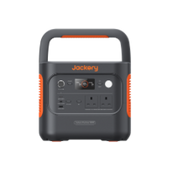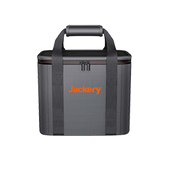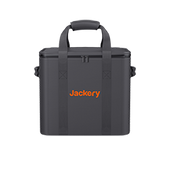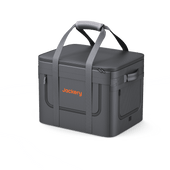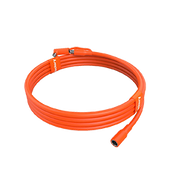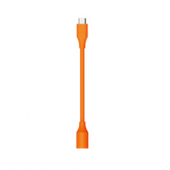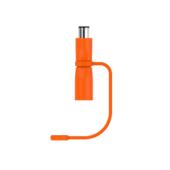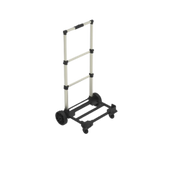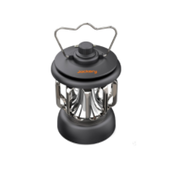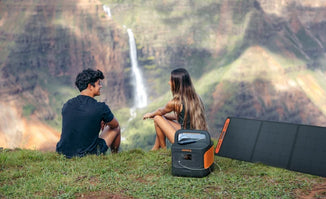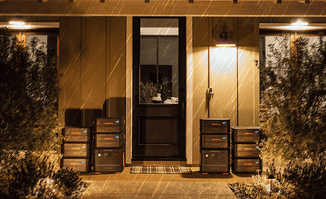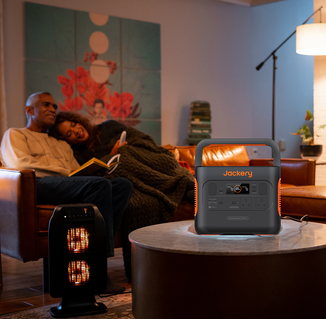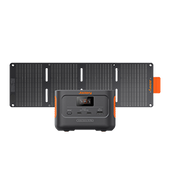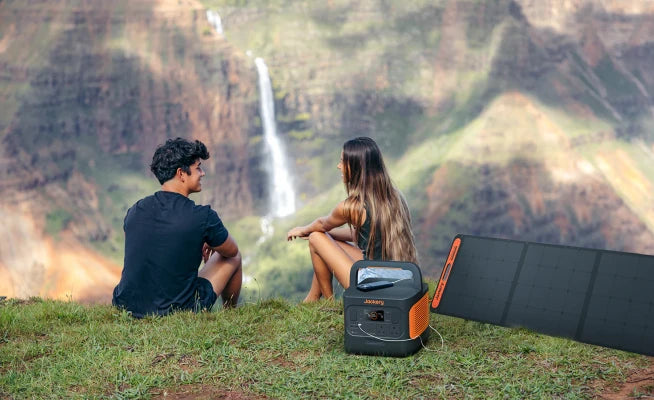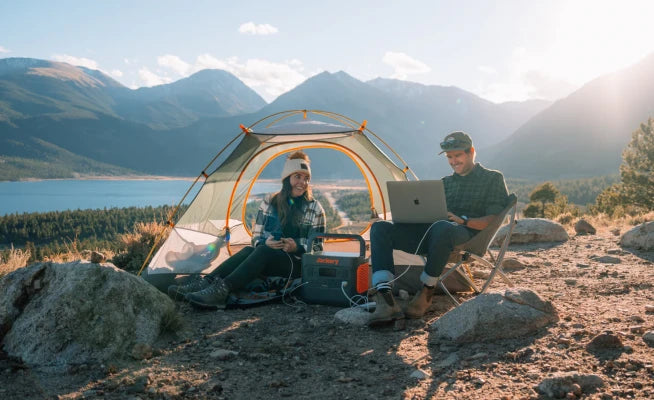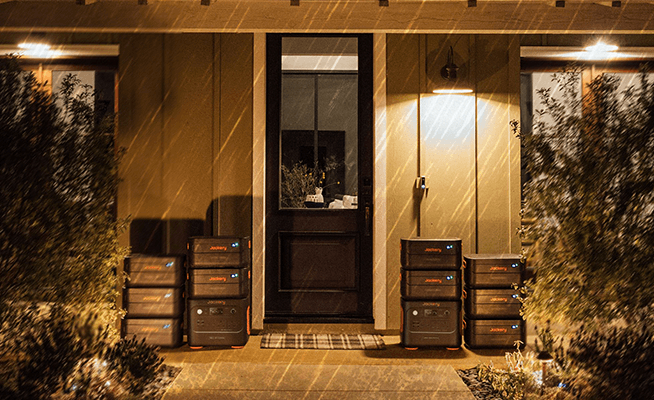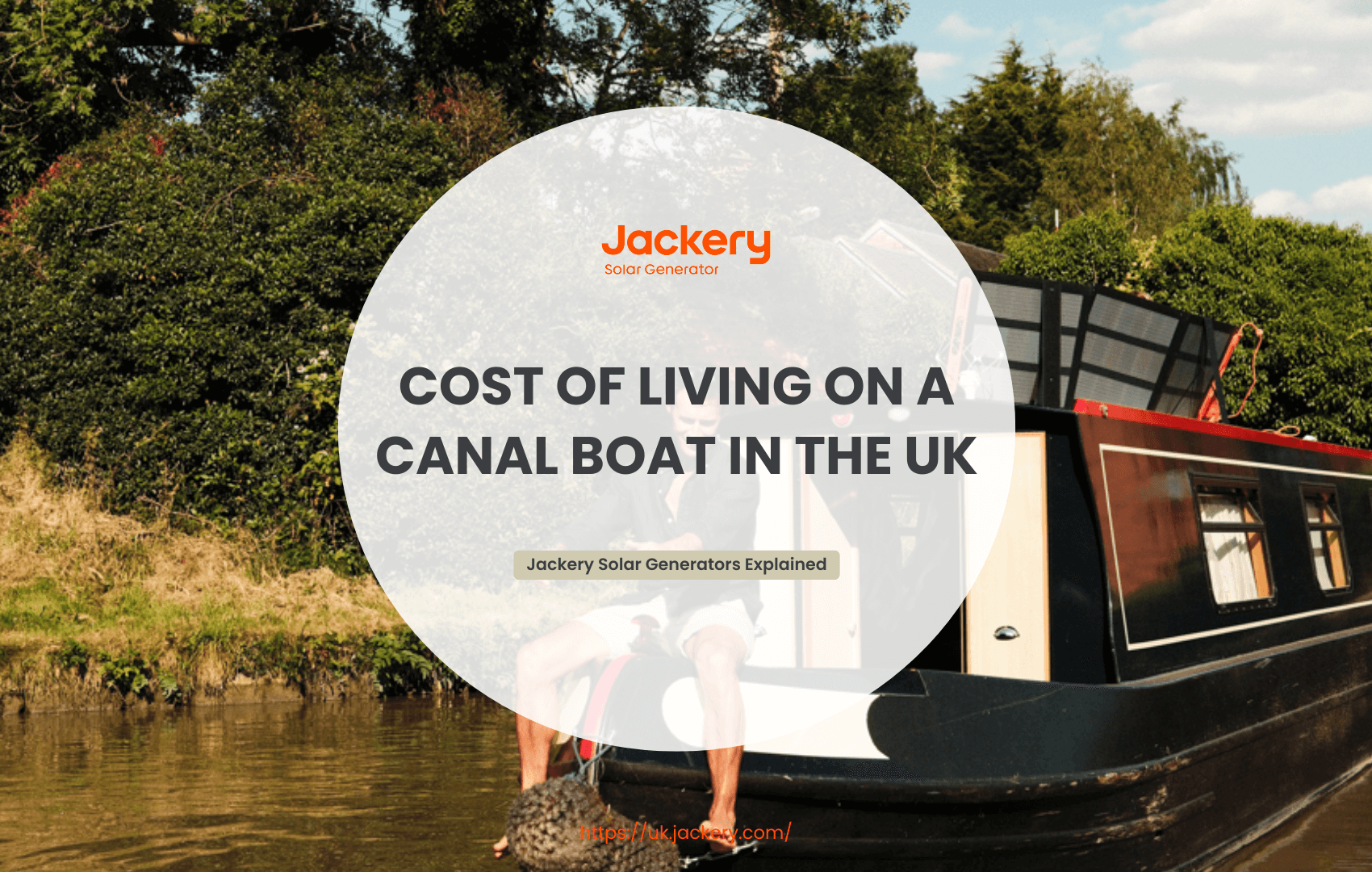Kayaking in London is swiftly becoming one of the city's most fun and leisurely outdoor pastimes. There is a path or event for every adventurer, from peaceful paddles along the lush canals of Little Venice to exciting rides on the turbulent Thames. London has a lot of great places to kayak, whether you're a total beginner or a pro.
You can enjoy the natural beauty, explore the city, and connect with other people while you're out on the water. It's never been easier to see London from a different aspect, right from the water. You can take guided tours, get safety tips, rent a kayak, and go to group events all year long. Dive in and paddle through the city.
|
Key Takeaways: |
|
Kayaking in London offers a unique viewpoint on the city's historic canals, modern attractions, and secret green passageways. Beginner-friendly kayaking places in London include Paddington Basin, Regent's Canal, and Limehouse Cut, with calm waters and easy access. Proper kayak safety in London involves using buoyancy aids, verifying weather and tide conditions, and warning others before starting. The historic canal network in Little Venice provides a peaceful and scenic alternative to busier routes, making it ideal for photography, relaxation, and observing urban wildlife. Taking a Jackery Portable Power Station, such as Explorer 300 Plus, will add convenience and fun to your kayaking trip, since it can power your electronics and devices outdoors. |
Why Kayaking in London Is the Ultimate Urban Adventure?
London is one of the busiest cities in the world, yet its rivers offer a surprisingly tranquil escape from the city's hustle and bustle. Whether you're a first-time paddler or a seasoned kayaker, paddling through the heart of the capital shows you a different side of the city, one that is full of beautiful scenery, history, and secret places.
Kayaking in London lets you explore and get some exercise at the same time. You may paddle on the Thames or through peaceful canals, and you'll see famous landmarks and city wildlife from a new angle. With established kayaking centres, easy-to-reach routes, and safe alternatives for beginners, it's an excellent opportunity to get away from the throng and see the city at your own leisure.
Paddle Through London’s History and Landmarks
One of the best ways to see famous London attractions like the Tower of London, St. Paul's Cathedral, and the London Eye is to kayak through the city centre. You can kayak beneath Tower Bridge and past Shakespeare's Globe Theatre on the Tidal Thames. This is a fun way to mix adventure with cultural sightseeing.
Explore Hidden Urban Nature on the Canals
The Regent's Canal and the River Lea are quieter and more beautiful places to paddle. They go through places like Little Venice, Camden Lock, and Hackney Wick. These paths reveal a more peaceful side of the city, with street art, converted warehouses, and houseboats on either side. They are often home to wildlife, including herons, ducks, and swans.
Kayaking for Every Skill Level
In London, there is a route for everyone, whether you are a beginner or an experienced kayaker. New paddlers should start in calm waters, such as the Grand Union Canal. More brave people can try the fast-moving Thames with help from certified operators.
Kayaking establishments throughout London offer rentals, safety briefings, and guided excursions, so you don't need to own any gear to enjoy the activity.
Top Kayaking Spots in London for Every Skill Level
London's waterways have a wide range of routes for all levels of paddlers, from beginners to experienced kayakers. There are many ways to see the city from the water, from quiet canals to busy ports and the famous River Thames. Here are the most incredible places to go kayaking in London, chosen carefully to fit all ability levels and provide you with unforgettable times on the water.

Regent's Canal – Calm, Scenic, and Beginner-Friendly
Skill level: Beginner
Route: Little Venice to Limehouse Basin
This 8.6-mile path across Regent's Canal is one of the most beautiful and easy-to-reach places in London to paddle. It's perfect for beginners because the water is flat and doesn't change with the tides. It softly winds past famous places like Camden Lock and King's Cross. You don't need any specific licenses or experience to paddle here, so it's one of the best places for first-time kayakers in the capital. The paddle is calm, and you can see beautiful houseboats, lush walks, and old bridges.
Paddington Basin – A Relaxing Urban Launch Point
Skill level: Beginner to Intermediate
Route: Paddington Arm of the Grand Union Canal
This secluded basin is hidden behind Paddington Station. The water is tranquil, there isn't much boat traffic, and it's a great place to learn how to paddle or build your confidence. From here, people in kayaks can go west to Little Venice or east to Camden. Because of its position and calm seas, it's a favourite choice for beginners. The area also has a lot of cafés and benches by the water, which makes it a friendly and easy-to-get-to place.
River Thames – Iconic Urban Adventure on Tidal Waters
Skill level: Intermediate to Advanced
Route: Greenwich to Battersea or Richmond to Twickenham
One of the most famous kayaking experiences in the UK is paddling down the River Thames. You can see Tower Bridge, the London Eye, and Big Ben from the water. These parts, on the other hand, are tidal and should only be tried if you are well-prepared, know when the tide will come in and out, and are part of an organised group. It's challenging due to boat wakes, currents, and hectic traffic, but it's a great experience for experienced paddlers.
Royal Docks – Spacious and Great for Technique Practice
Skill level: Intermediate
Route: Royal Victoria Dock, East London
The Royal Docks are a great place to paddle in the capital because they are big and safe. They are also popular for group sessions for technique development. It's one of the few sites where you may kayak without a licence, which makes it even more appealing. The wide-open water is ideal for practising and improving your paddling skills without worrying about other boats. There are also clubs and outfitters available here, making it a suitable destination for both beginners and experienced individuals.
Lee Valley White Water Centre – Olympic-Level Adrenaline
Skill level: Advanced
Route: Olympic Course at Waltham Cross
This Olympic-level site was developed just for the 2012 Games and is now one of the best places in the UK to train for white-water sports. The facility has Grade 3 and 4 rapids, making it great for experienced kayakers who want to get their adrenaline pumping. Instructors lead the sessions, and equipment can be rented. It also has white-water training classes for flatwater paddlers who wish to improve their skills.
Kayaking on the Tidal Thames: What You Need to Know
One of the most thrilling yet challenging water activities you can undertake in London is kayaking on the tidal part of the River Thames.
This historic waterway runs through the centre of the city, going under notable landmarks and giving paddlers a unique view of the capital's skyline. The tidal Thames, on the other hand, is a complex environment that requires careful planning, the correct equipment, and a good understanding of how to stay safe on the river.

Tides, Timing, and Planning Your Route
The River Thames is tidal from Teddington Lock to the east, meaning that the water level and flow vary significantly depending on the tide. This generates strong currents that can go up to 4 knots, so it's essential to plan your voyage carefully.
Most experienced paddlers prefer to kayak during the ebb tide, when the river flows towards the sea, so that they can use the natural push. If you don't organise your paddling around tide tables, it can be pretty tiring or even deadly.
Kayaking on the tidal Thames involves a lot of planning ahead of time, especially when it comes to the tides and the weather, both of which can change suddenly. Before every trip, you should check the tide schedules and safety advisories from the Port of London Authority (PLA).
Licensing, Access, and Legal Requirements
You don't need a waterways licence to paddle the tidal Thames, but you do need one for canals and non-tidal rivers. But you still need to tell the PLA about your excursion and follow its rules for recreational paddling. The Thames is a busy river with cargo vessels, ferries, and quick passenger services. Paddlers need to know the rules of the road to keep safe.
If you're new to the tidal Thames, it's best to stay away from it entirely unless you have a qualified guide accompanying you. Several kayak rental companies provide guided journeys across central London, usually timed with the tides to make sure the conditions are good and safe.
Key Launch and Exit Points
When kayaking on the tidal Thames, there are several well-known places where you can safely enter and exit the water. Cremorne Riverside in Chelsea, Putney Embankment, Greenwich Pier, and Shadwell Basin are also popular choices. Many clubs and guided tours use these places, and they often have ramps or slipways.
These access points are essential in case things go worse while you're paddling, because they enable you to leave the water without finishing the whole intended course. It's crucial to plan for emergency exits on any journey to the tidal Thames.
Equipment and Safety Essentials
A buoyancy aid, a waterproof VHF radio or phone in a dry bag, and the proper cold-weather clothing are all essential because conditions can change rapidly. Paddlers should also wear colourful clothes and carry a whistle to make it easier for other people on the river to see them. For safety reasons, everyone in the group must be aware of the PLA's river zones and vessel routes.
London's waterways, especially the tidal Thames, can be busy and require careful navigation. Taking a Jackery Portable Power Station for kayaking in London is about combining the practicality of modern technology with the adventure of paddling the city's waterways.
The Thames has a strong current, boats that move quickly, and limited room to manoeuvre; therefore, casual paddlers and tourists shouldn't go alone without a guide.
|
Kayaking Essentials |
||
|
PFD |
Signaling Whistle |
Bilge Pump |
|
Paddle Leash |
First-Aid Kit |
Navigation Tools |
|
Dry Bag |
Quick-Drying Clothes |
Portable Power |
|
Hydration |
Sun Protection |
Cold Water Gear |
Highlights of the Route
The tidal Thames is one of the most beautiful and memorable places in the UK to kayak, as long as you do it safely. You will pass famous places including Tower Bridge, the Shard, HMS Belfast, and the London Eye. There will be a lot fewer people than if you were walking. The views from the sea are the best, and the difference between old buildings and new towers is amazing. A lot of people say it's the best urban paddling experience, but it's better for people who have training or are with a professional guide.

Jackery Portable Power Station for Kayaking
Taking a Jackery Portable Power Station for kayaking in London is about combining the practicality of modern technology with the adventure of paddling the city's waterways. While kayaking in London may not be a remote wilderness expedition, a portable power station offers numerous benefits that enhance the experience, ensuring safety, convenience, and enjoyment.
London's waterways, especially the tidal Thames, can be busy and require careful navigation. A Jackery can keep your phone, GPS device, or VHF radio charged. A dead phone or GPS can be a serious safety issue, particularly if you're navigating a long stretch or paddling after dark.
In case of an unexpected incident or a sudden change in weather, having a reliable power source for communication is vital. You can make an emergency call, send a text for help, or use an emergency beacon without worrying about battery life.
Jackery Explorer 300 Plus
Taking a Jackery Explorer 300 Plus for a kayaking trip in London is about finding the perfect balance between portability and power. While London's waterways aren't a remote wilderness, a portable power station adds a significant layer of safety, convenience, and enjoyment to the experience.

Size Matters: The Explorer 300 Plus is one of Jackery's most compact power stations, weighing just 8.27 lbs (3.75 kg). This is its most significant advantage for kayaking. It won't take up much space in your dry bag or kayak's storage compartment, and its built-in handle makes it easy to carry down to the river or canal.
Ideal for Day Trips: Most kayaking excursions in London are day trips or a single overnight adventure. The 300 Plus's compact size and 288Wh capacity are ideally suited for this, providing enough power for essentials without the bulk of a larger, heavier power station.
Safety First: Even on a well-known waterway like the Thames or the Regent's Canal, having a fully charged phone is a top priority. You can power your phone's GPS for navigation, check real-time tide tables for the tidal Thames, and, most importantly, have a way to call for help in an emergency. The 300 Plus has enough capacity to charge a phone dozens of times.
Power for Gadgets: The 300W AC outlet and multiple USB ports (including a 100W USB-C PD port) allow you to power a wide range of devices. You can charge your camera or drone batteries to capture stunning city views from the water, or power a small Bluetooth speaker to enjoy music while you paddle.
LiFePO4 Battery: The Explorer 300 Plus uses a Lithium Iron Phosphate (LiFePO4) battery, which has a significantly longer lifespan than older battery technologies. Jackery rates it for over 3,000 cycles to 80% capacity, meaning it will remain reliable for many years of kayaking trips.
|
Appliances |
Running Time |
|
Phone (29W) |
13 Charges |
|
Flashlight (10W) |
11.8H |
|
Radio (10W) |
11.8H |
|
GPS Device (15W) |
9.4H |
|
Camera (20W) |
7.9H |
(*The running time is only for reference; the actual running time is based on usage.)
How to Stay Safe While Kayaking in London
Kayaking through the heart of London is a unique mix of city discovery and outdoor adventure. Still, the city's waterways, notably the Tidal Thames, require considerable attention to safety. The tides, weather, and traffic on the river all impact the safety of the area.
It's important to be ready with the correct information, gear, and awareness of your surroundings, whether you're going alone or with a group. Planning early can significantly reduce the hazards and ensure your trip on the water goes smoothly and is enjoyable.

Tip 1: Always Wear a Buoyancy Aid
Every paddler, no matter how experienced, has to wear a buoyancy aid. Even good swimmers can get shocked by cold water, but a buoyancy aid that fits well can help with that and keep you afloat in an emergency. If you capsize, you need to wear it all the time, not just while you have one on board.
Tip 2: Choose the Right Waterway for Your Skill Level
Some of London's canals are not good for beginners. The Tidal Thames has powerful currents, tide surges, and large boats; therefore, only experienced kayakers should venture there. If you're new to the pastime, consider calmer routes like the Regent's Canal or the Paddington Basin, where the water is easier to navigate and there are fewer other boats. Your safety needs to match your ability level to the environment.
Tip 3: Check Tidal Movements and Weather Conditions
Always verify the tidal times and the weather in the area before you set sail. The tide on the Thames can change direction quickly, generating strong currents that can be too much for less experienced paddlers to handle. Changes in the weather, such as strong winds or storms, can make it harder to see and navigate. If you know when and where things may change, you can stay safe.
Tip 4: Dress for the Water Temperature
Even in the summer, the UK's waterways are still frigid. If you go into cold water without thermal protection, you could get hypothermia in just a few minutes. If you fall in, wearing a wetsuit or drysuit will help keep your body temperature stable and stop significant problems from happening. It's also a good idea to carry dry bags with extra clothes, a cell phone in a waterproof pouch, and a whistle.
Tip 5: Never Kayak Alone on Unfamiliar Routes
Kayaking with a group reduces the risks associated with paddling alone, especially in busy or unfamiliar waterways. Guided sessions are safer since instructors help with safety briefings, route planning, and other things. If you get tired, hurt, or lost, having other people around can help you get help faster.
Tip 6: Follow On-Water Navigation and Safety Etiquette
People, motorboats, rowers, paddleboarders, and wildlife all share London's canals and rivers. Stay on the right side of the canals, avoid boats that are moored, and maintain a safe distance from larger traffic. If you're not sure of the clearance and conditions, don't go beneath low bridge arches on tidal rivers. Visibility is essential; wearing bright clothes and having a light on your kayak can help people see you.
Tip 7: Let Someone Know Your Plans
It's essential to inform someone on land of your route, approximate return time, and emergency contact information. Some paddlers additionally utilise GPS tracking tools to make a unique position code that they can give to emergency personnel if something goes wrong. These easy actions make sure you get help faster if you need it.
Kayak Hire and Guided Tours in the Capital
Kayaking around London is not only a great way to view the city, but it's also easier than most people think. The city has a lot of places where you can rent a kayak and go on guided trips, whether you're a beginner who needs help or a confident paddler who doesn't have their own gear.

Easily Accessible Kayak Hire Locations Across London
There are several places in London where you may rent a kayak that you can trust, especially near the Regent's Canal, Paddington Basin, and areas of the Thames. Most of the time, these facilities will provide you with all the necessary gear, including a kayak, paddle, and buoyancy aid, as well as a safety briefing.
Some of them work from old barge boats or cafés by the water, which makes the experience both easy and beautiful. Rental options often include hourly pricing or half-day sessions, offering you flexibility based on your plans and fitness level. You usually have to book ahead of time, especially in the summer when demand is high.
Guided Kayak Tours for Beginners and Tourists
If you're new to paddling or want to do it with less stress, guided excursions are the best way to go. Most of the time, these adventures come with a trained guide, all the gear you need, and a set route that goes by famous places like Tower Bridge, Little Venice, or Limehouse Basin.
Some tours have themes, like sunset paddles, moonlight excursions, or even kayak-based clean-up initiatives. This makes your vacation even more special. These guided sessions are a terrific way to start with confidence if you're worried about safety or finding your way around.
Tidal Thames Tours for Experienced Paddlers
More experienced paddlers can schedule guided trips along the Tidal Thames, a fast-moving portion of the river that goes under iconic monuments. Most of the time, trained instructors lead these tours and keep a close eye on the tides and the weather.
These routes are only suitable for competent paddlers with some experience due to the tides and commercial traffic. Some requirements, such as having been on a trip before or being in good shape, may apply. This kind of guided trip is a fun opportunity to get up close and personal with London's riverfront buildings while being safe under the watchful eye of an expert.
Flexible Booking and Eco-Friendly Experiences
Many kayak rental and tour companies now offer eco-friendly activities, including animal observation trips, river clean-ups, and low-impact paddling tours through nature reserves. You can book online and select your preferred location, tour type, and date. Some companies even provide gift cards, family packages, or group discounts, which makes kayaking in London easy and cheap.
Kayaking Events and Experiences in London
Kayaking in London isn't just a fun thing to do; it's also a social, adventurous, and often purposeful way to see the city from a new angle. The city's canals, docks, and even the Thames become lively places to have fun with paddle-powered activities all year long.
Themed and Seasonal Kayak Tours
A lot of companies now offer seasonal activities like Halloween night paddles, Christmas light tours, and even meditations in kayaks at sunrise. These trips usually feature stories, fun dress rules, and snacks, which turn a basic paddle into a fun adventure in the city.
There are events on the Regent's Canal and Limehouse Basin, where the tranquil water makes for innovative themes and mood lighting. Most of the time, these trips occur in the early evening or after dark, and a guide is present for safety and narrative purposes.
Social Paddles and Group Meet-Ups
Community kayak groups host social paddles throughout the year, welcoming both solo paddlers and families. These casual get-togethers help people of all skill levels meet new people, gain confidence on the water, and see different parts of the city together.
People love to meet up at places like Paddington Basin, Little Venice, and the Lee Navigation because the water flows slowly and the views are beautiful. Some groups also focus on making things available and accessible to everyone by giving people who have trouble moving or have sensory demands devices and help.
Kayak Clean-Up Events
Local programs that let kayakers mix paddling with conservation help keep London's waterways clean and safe. People who take part in clean-up events get a paddleboard or kayak and gadgets to help them pick up trash from the canals. These events often occur on weekends and attract people and families who are concerned about the environment.
These eco-friendly projects often take place in the quiet canals of East London and Little Venice. They are not only free or cheap to join, but they also support sustainability and are a fantastic way to get fit and meet new people.
Beginner Workshops and Skills Clinics
Many groups provide one-day workshops or multi-session courses for people who want to improve their kayaking skills. Beginner clinics teach you how to paddle, stay safe, find your way around the water and practise rescuing people.
More advanced skills sessions could include rolling, bracing, or moving from one type of kayaking to another. Some activities also teach participants about paddle sports like kayak surfing or canoe polo, which helps them find new hobbies that include water. To make sure the learning setting is secure, a lot of these programs are held in docklands, regulated canals, or private marinas.
FAQs
The following are frequently asked questions about kayaking in London:
1. How can I make my static caravan look nice?
To make your static caravan appear beautiful, focus on adding personal touches and upgrading essential areas rather than performing a complete remodel. Incorporate soft furnishings, such as cushions, rugs, and curtains, to bring warmth and colour. Replace walls with removable wallpaper or paint, and update your kitchen and bathroom with low-cost accessories.
Plants, lights, and comfy seats can also enhance outdoor settings. Clever storage options keep the area organised, making the caravan feel more roomy and friendly. These minor enhancements provide a comfortable and stylish environment that is personalised to your preferences.
2. What is the 10-year rule for static caravans?
The 10-year rule is a basic guideline in the caravan business that states that static caravans should have a usable lifespan of about ten years before requiring considerable repair or replacement. However, with proper maintenance and modifications, many static caravans may live considerably longer.
This rule frequently influences insurance and resale value, and some parks or insurance companies may apply restrictions based on caravan age. It is critical to maintain your caravan properly and examine park laws or insurance policies on caravan age limits.
3. How to renovate a static caravan on a budget?
Focusing on cosmetic modifications rather than structural alterations allows you to renovate a static caravan on a tight budget. Painting or applying peel-and-stick wallpaper to walls and cabinets is a cost-effective way to freshen up the interior. Upgrading soft furnishings such as drapes, cushions, and bedding adds personality without incurring exorbitant costs.
Consider vinyl flooring as an inexpensive solution for ageing carpets. Repurposing and upcycling furniture, upgrading lighting, and improving outdoor areas with DIY projects are all inexpensive methods to redecorate without breaking the bank.
4. What is the best flooring for a static caravan?
Due to its durability, water resistance, and ease of care, vinyl flooring is often regarded as the finest option for static caravans. It can survive the intensive use, dampness, and temperature variations found in caravan conditions. Vinyl also comes in a variety of styles, including wood and tile appearances, providing aesthetic versatility.
Some homeowners choose laminate flooring for its warmer feel, but it requires more careful installation to avoid damage. Carpets are less desirable owing to wear and moisture difficulties, although they can be utilised in bedrooms to provide additional comfort.
Final Thoughts
With numerous waterways running through the centre of the city, kayaking in London is not only a fun and energetic way to explore the sights—it's also a poignant reminder of how much adventure lurks beneath the surface of daily life.
There are numerous ways to paddle your way through history, nature, and community, ranging from calm getaways on Regent's Canal to adrenaline-pumping trips on the Thames. Whether you're participating in a cleaning paddle, taking a guided night tour, or simply renting a kayak for the afternoon, London's waterways are always waiting to welcome you aboard.



